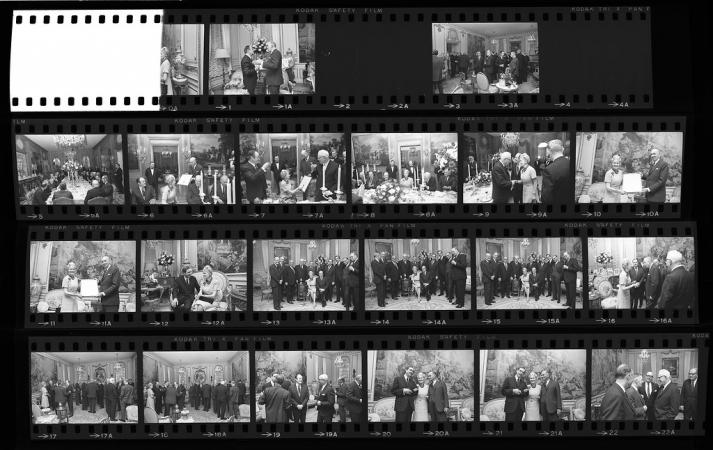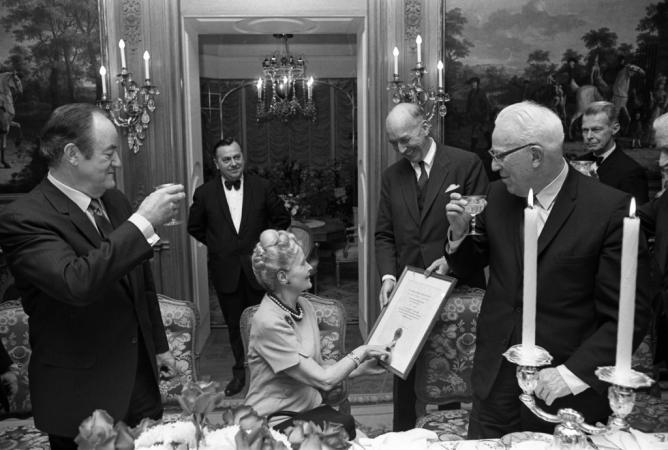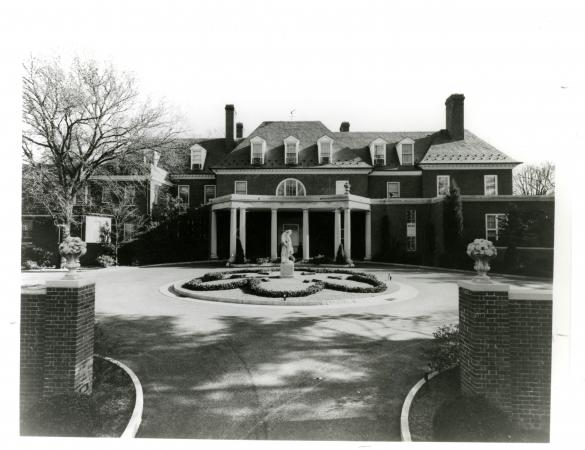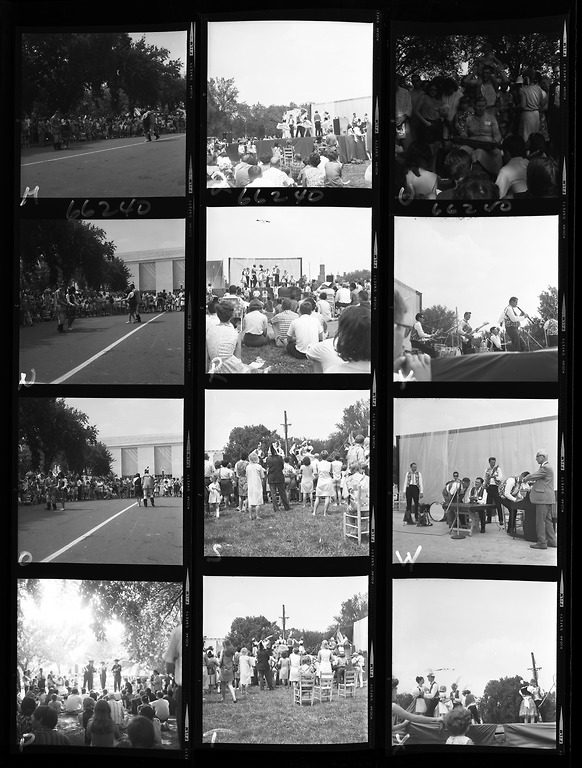
On this day, January 14th in 1969, Marjorie Merriweather Post, Smithsonian Secretary S. Dillon Ripley, and the Board of Regents toasted to Post’s donation of her 25-acre Hillwood estate in Northwest Washington, D.C. and its collections to the Smithsonian Institution. As it turned out they were celebrating a Smithsonian museum that would never come to be.

This major donation was over a decade in the making. Post, then the wealthiest woman in the world, had an existing relationship with the Smithsonian, donating items throughout the 1950s. It was Secretary Leonard Carmichael who opened discussions with Post about her Hillwood estate and its unique collections, which she amassed during her marriage to lawyer and diplomat Joseph Davies from 1935 to 1955. The couple spent two years in the Soviet Union while he served as U.S. Ambassador. Her time there inspired Post to collect eighteenth- and nineteenth-century Imperial Russian art, as well as Sevres porcelain, and numerous items created by Faberge, the jeweler for the Czars.

In May of 1961, Post hosted the Board of Regents so they could view the estate and collections, but the reaction was mixed. While some saw the estate as the perfect fit, others expressed concern that an institution dedicated to serving the public would be overstepping its mission by taking on such an opulent bequest.
In 1962, Post and the Smithsonian reached an agreement and announced that she would donate Hillwood to the Smithsonian to be operated as a separate museum with a $10 million endowment. In 1967, she presented the terms of her eventual bequest to the new Secretary S. Dillon Ripley, and, after two years of negotiations, Hillwood was deeded to the stewardship of the Smithsonian in January 1969.

However, Secretary Ripley, shared some of the Regents’ concerns about the strict terms of the bequest. Along with provisions that limited what artworks could be added or loaned to other museums and instructions on how objects were to be displayed, Post stipulated that the house be maintained as she kept it during her lifetime. This included fresh flowers changed daily throughout the estate.
By the time Post died in 1973, the United States was in the midst of great social and cultural change, as well as inflation and an economic downturn. Ripley, whose tenure marked incredible growth for the Smithsonian, was interested in creating programs and museums reflecting the changing American cultural landscape. Meanwhile, the value of the endowment dropped significantly and the estimated costs for operating the museum increased substantially. The Marjorie Meriweather Post Foundation would not provide additional funds, and the Institution did not view operating a museum that memorialized a single wealthy individual as feasible.
At the January 22, 1976 meeting of the Board of Regents, members voted to transfer the Hillwood Estate and collections to the Post Foundation. On July 1, 1976, the Smithsonian formally returned Hillwood and it is now operated as a private museum, Hillwood Estate, Museum and Garden.
At a time when the world was rapidly changing, Ripley chose to turn the Smithsonian’s attention to developing the Festival of American Folklife and the Anacostia Community Museum.
Related Resources
- Hillwood Estate, Museum, and Gardens, website
Produced by the Smithsonian Institution Archives. For copyright questions, please see the Terms of Use.



Leave a Comment